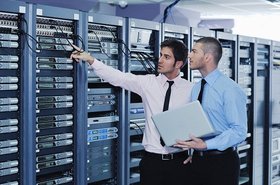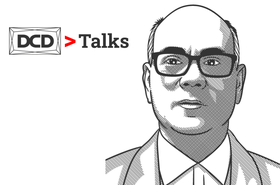Mission-critical engineers play a pivotal role in industries where there is zero margin for error. From aviation and rail to nuclear power plants, banking and finance, healthcare, communications, and electric and water utilities, etc. these professionals are expected to possess diligence, organization, creativity, and inquisitiveness. They are constantly striving for improvement and willingly sharing their knowledge. The significance of their work on public safety and corporate bottom-line cannot be overstated.
However, despite the advancements in technology, human error continues to contribute significantly to downtime experienced by mission-critical facilities and their associated infrastructure.
To reduce these incidents, it is essential to consider the role of training, technology tools, and character development in mitigating errors and improving the Facilities Process Management (FPM) as identified in my first book, Maintaining Mission Critical Systems in a 24/7 Environment.
Recent events, such as the Texas power grid failure in 2021 and the Microsoft Azure outage in September 2018, caused by infrastructure vulnerabilities and lack of preparedness, underscore the importance of continuous improvement, proper training, robust safety, and most importantly, integrating lessons learned measures in mission-critical industries. As we learn from our mistakes, we will reduce our future risks.
In recent years, there has been an increasing emphasis on digital tools and technologies to support mission-critical engineers. For example, Data Center Infrastructure Management and Facilities Process Management tools have been developed to monitor and manage critical infrastructure, helping to prevent downtime and increase operational efficiency and understanding.
These tools, blended with advancements in automation and AI, hold the potential to significantly reduce human error over the next decade and facilitate knowledge transfer.
However, published incidents like the OVHcloud data center fire in 2021 due to inadequate fire safety measures, the Amazon Web Services outage in 2020 caused by issues with the Kinesis Data Streams service, the Google Cloud outage in 2019 due to a configuration error, the Microsoft Azure outage in 2018 triggered by a cooling system failure, and various colocation and corporate power outages over the last few years caused by a power surge during maintenance or other maintenance related activities, remind us that there is still room for improvement in data center and critical infrastructure operations.
Emerging technologies such as AI, VR, and AR can play a significant role in training the next generation of mission-critical engineers. Virtual reality (VR) and augmented reality (AR) provide immersive, hands-on training experiences that simulate real-world scenarios similar to how pilots and astronauts develop their skills, allowing trainees to practice their craft in a safe and controlled environment.
AI-powered systems can analyze performance data, identify areas for improvement, and tailor training programs to individual needs, enabling engineers to learn more efficiently and effectively. When combined with scenario-based training and mentorship from experienced professionals, these technologies facilitate the sharing of knowledge and bridge the gap between retiring experts and new engineers.
While these technological advancements are vital, they are not sufficient on their own. The foundation of a successful mission-critical industry lies in its workforce. To build this foundation, we must focus on education, training, and continuous professional development.
Educational institutions and industry stakeholders need to collaborate expeditiously with industry subject matter experts in developing specialized programs tailored to the unique requirements of mission-critical engineering. These programs should emphasize technical skills, hands-on experience, and real-world case studies.
Additionally, they should incorporate elements of ethical decision-making, effective communication, situational awareness, and teamwork, as these soft skills are equally important in preventing errors and ensuring success.
Furthermore, continuous professional development is crucial for mission-critical engineers to stay updated on the latest trends and technologies in their respective industries. Companies must invest in providing ongoing training and opportunities for their engineers to expand their knowledge and hone their skills, a good practice is 10 percent of an employee's compensation should be allocated to continuous improvement and training.
To foster a culture of continuous learning, organizations should encourage their employees to pursue certifications, attend industry conferences and workshops, and engage in collaborative projects.
By creating a supportive environment that values professional development, companies can empower their engineers to reach new heights of expertise and innovation. Mentorship programs can play a vital role in the growth and development of mission-critical engineers. Experienced professionals can provide guidance, share their experiences, and impart valuable knowledge to the next generation. By pairing aspiring engineers with mentors who have a wealth of industry expertise, organizations can facilitate the transfer of critical skills and lessons learned.
Moreover, collaboration and knowledge-sharing within the industry are essential. Professional organizations and industry associations should create platforms for networking, information exchange, and best practice sharing among mission-critical engineers. These forums can serve as valuable resources for staying updated on industry advancements, emerging technologies, and regulatory changes.
By fostering a sense of community and encouraging collaboration, these organizations can contribute to the collective growth and advancement of mission-critical engineering industry as a whole. Mission-critical engineers must also possess a strong sense of ethics and responsibility. Their work directly impacts public safety and corporate bottom-line, and it is essential that they operate with the highest level of integrity.
Effective communication and teamwork are also crucial aspects of mission-critical engineering. Engineers must be able to clearly convey information, collaborate with multidisciplinary teams, and work seamlessly under pressure. These skills can be developed through interactive training exercises, team-building activities, and real-world simulations. By emphasizing the importance of effective communication and teamwork, organizations can enhance the overall performance and reliability of their mission-critical operations.
Character development is another key factor in the success of mission-critical engineers. These professionals must possess qualities such as resilience, adaptability, and a commitment to lifelong learning. They need to embrace a growth mindset, continuously seeking opportunities for self-improvement and professional growth. Organizations should foster a culture that encourages employees to learn from mistakes, take ownership of their work, and strive for excellence.
By promoting a positive and supportive work environment, organizations can nurture the development of well-rounded mission-critical engineers who are equipped to handle the challenges of their roles.
In conclusion, becoming a mission-critical engineer requires a combination of technical expertise, continuous learning, and the cultivation of essential character traits. While advancements in technology such as AI, VR, and AR provide valuable tools for training, they must be accompanied by comprehensive education, hands-on experience, and ongoing professional development.
Collaborative efforts between educational institutions, industry stakeholders, and government bodies are necessary to ensure the development of specialized programs tailored to the unique requirements of mission-critical engineering.
More from PMC Group I
-

Work smarter, not harder
How PMC Group I is solving the workforce dilemma
-

DCD>Talks inspiring future talent with Peter Curtis, PMC Group I
DCD's CEO, George Rockett will be joined on the DCD>Talks stage by PMC Group I's CEO, Peter Curtis, about the 'skills gap' challenge facing the mission-critical infrastructure industry
-

Sponsored Tik-Tok: The countdown to inspiring the next generation of mission critical professionals
The new ‘mission control’ is now and time is of the essence to inspire the next generation to captain the ship


